What do you do when you don’t have any teeth, claws or toxins to protect yourself from menacing predators? These transparent fish and other transparent animals camouflage themselves by baring all.
#1. Ghost Shrimp
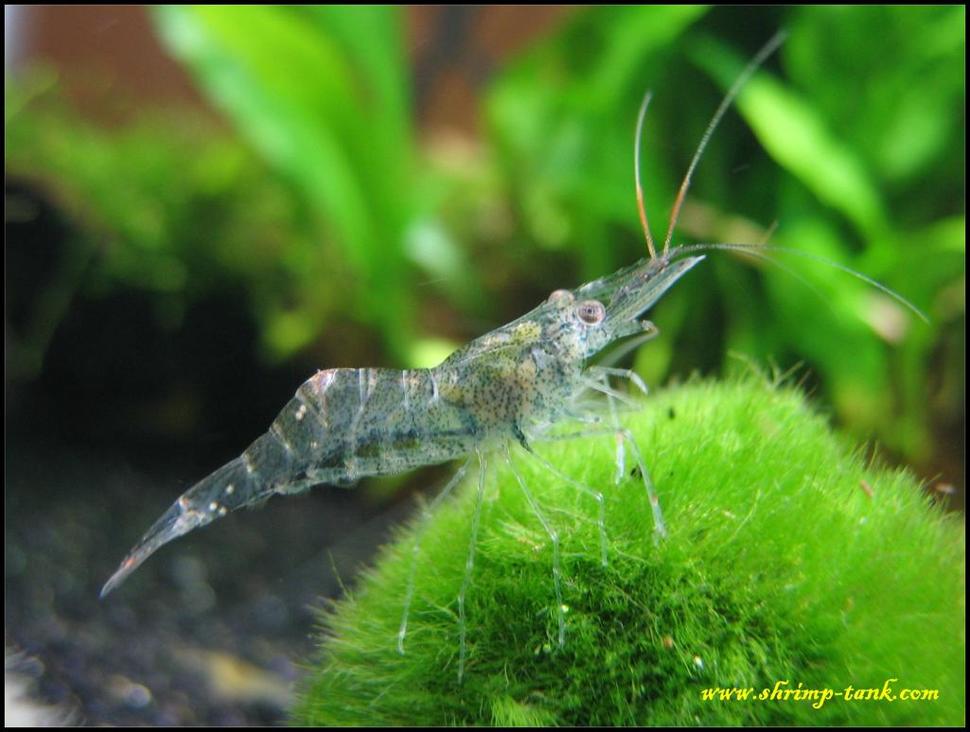
Also known as the Glass Shrimp, this translucent crustacean is a popular pet. Its natural habitat is in the brackish water of wetlands, where it is a skilled scavenger.
#2. Barreleye Fish
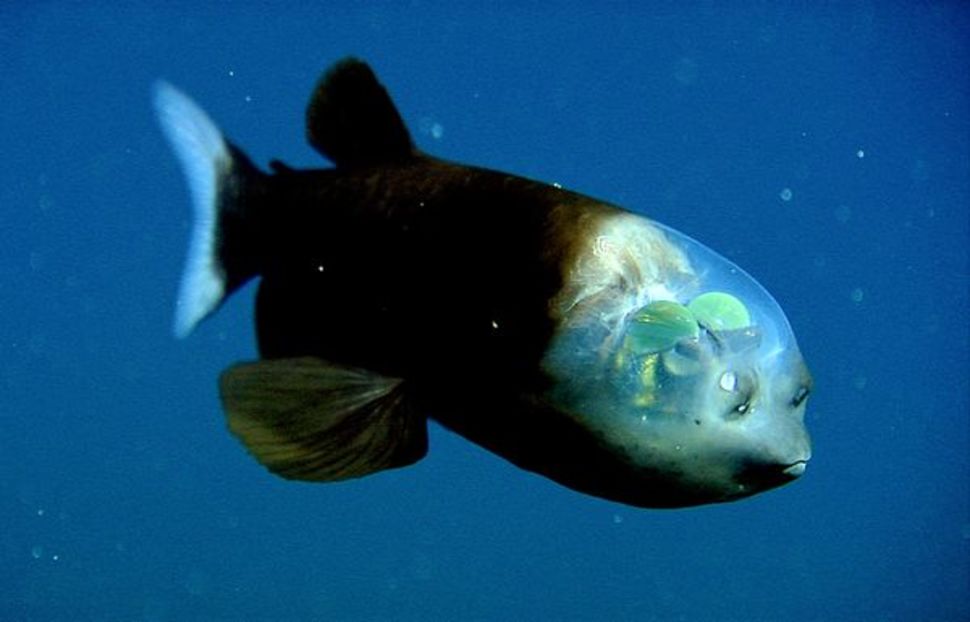
This intriguing transparent fish has barrel-shaped tubular eyes that are extremely light-sensitive eyes and are directed upwards to detect the silhouette of prey. The eyes are cased in a transparent domed head, which allows the fish to capture maximum light. The luminous organs of this fish glow because of the presence of symbiotic bioluminescent bacteria. The two spots above the fish’s mouth that look like eyes are actually olfactory organs called nares (similar to human nostrils).
#3. Glass Frog
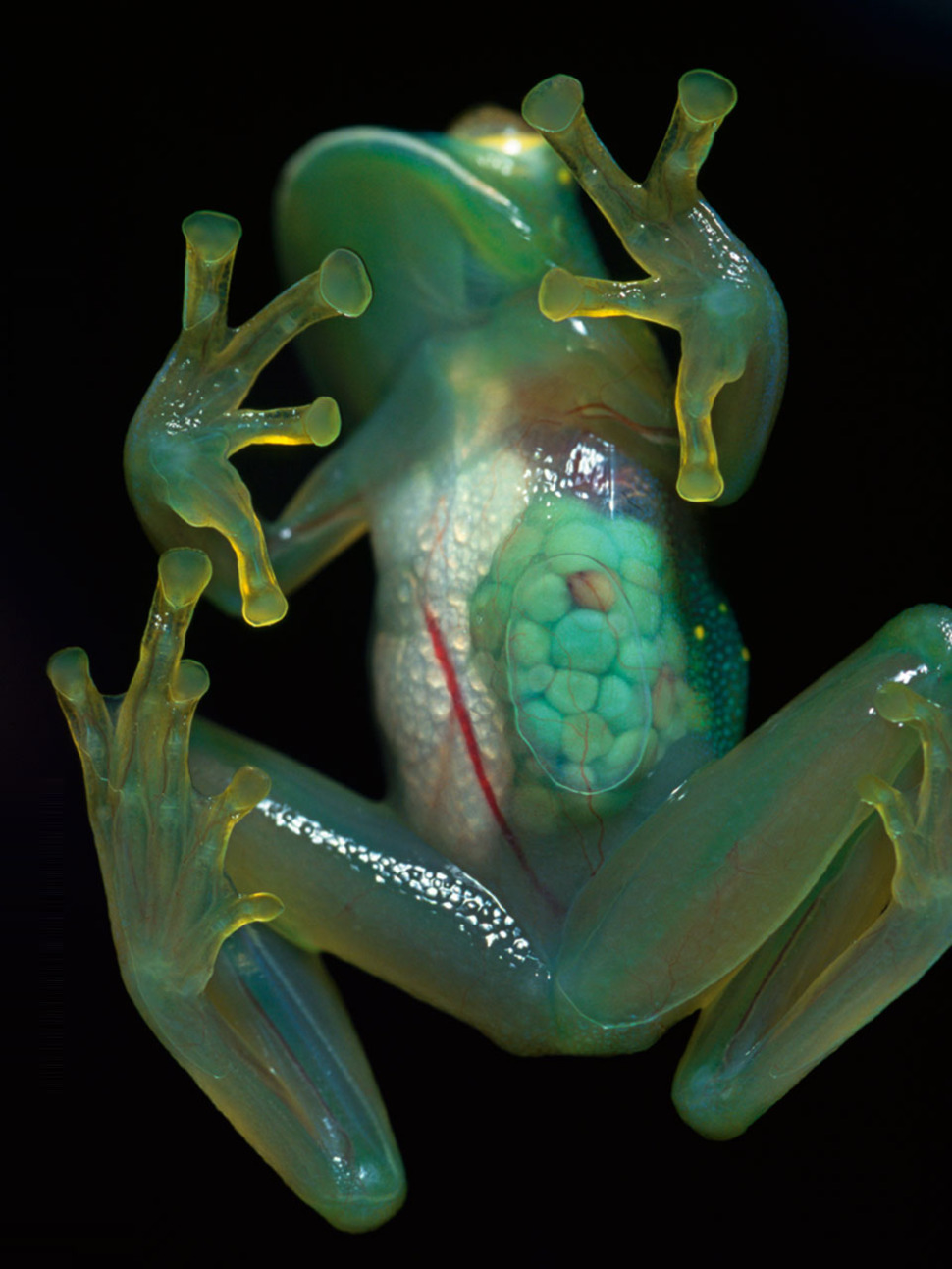
This amazing amphibian has a transparent under-belly allowing you to see a fully visible system of organs. These nocturnal creatures are tiny — a mere 2–8 centimetres — and live in the canopies of Central and South American rain forests. When they sit still, they’re extremely difficult to spot from a distance.
#4. Glasswing Butterfly
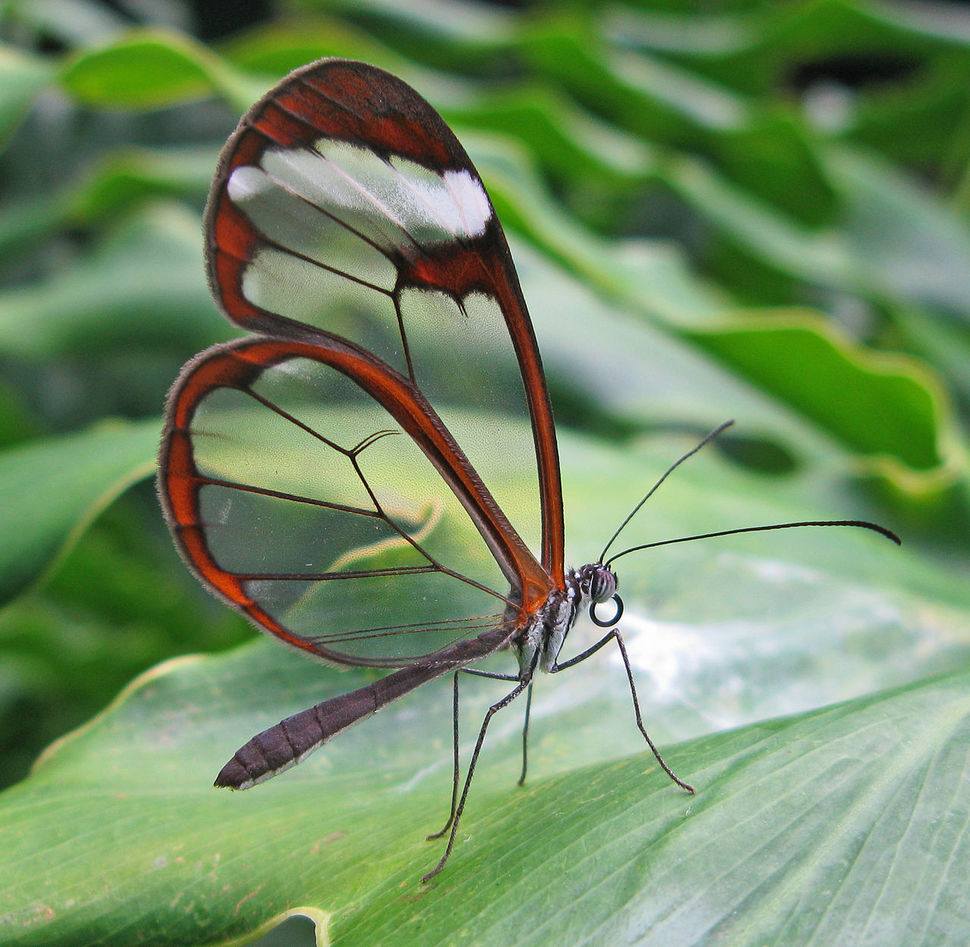
Native to Columbia, Bolivia, Peru, and Ecuador, the Glasswing butterfly features huge transparent wing panels. The Spanish name ‘espejitos’ means ‘little mirrors’. Adult glasswing butterflies will often migrate great distances, and males are known to lek, or gather in large groups for the purpose of competitive mating displays.
#5. Crocodile Icefish
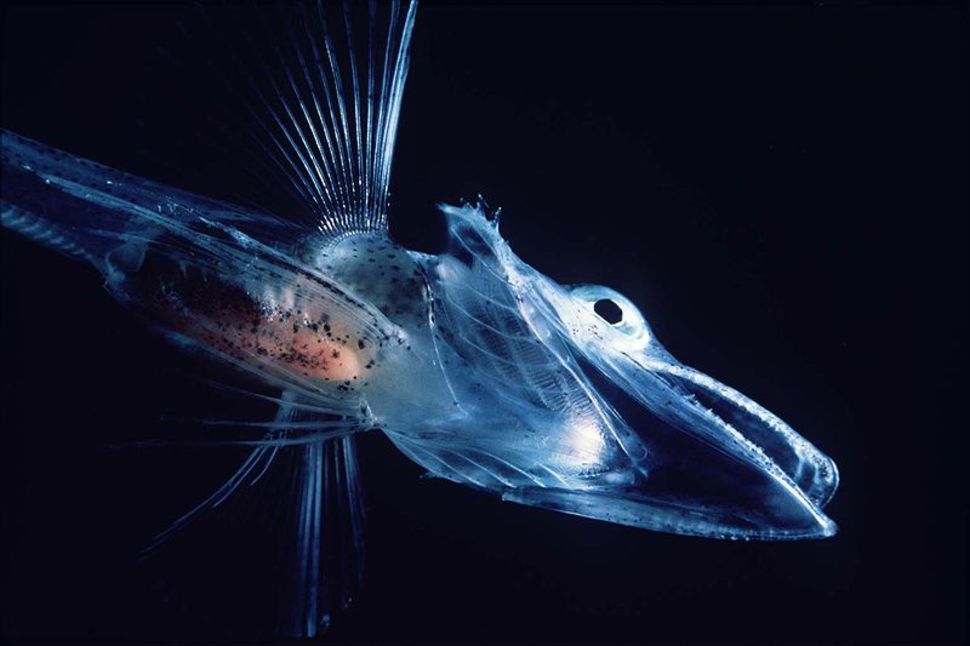
This ghostly Antarctic transparent fish has colourless blood — it’s the only known vertebrate without red blood cells and hemoglobin (the iron-rich protein that binds and transports oxygen through the circulatory system).
#6. Tortoise Shell Beetle
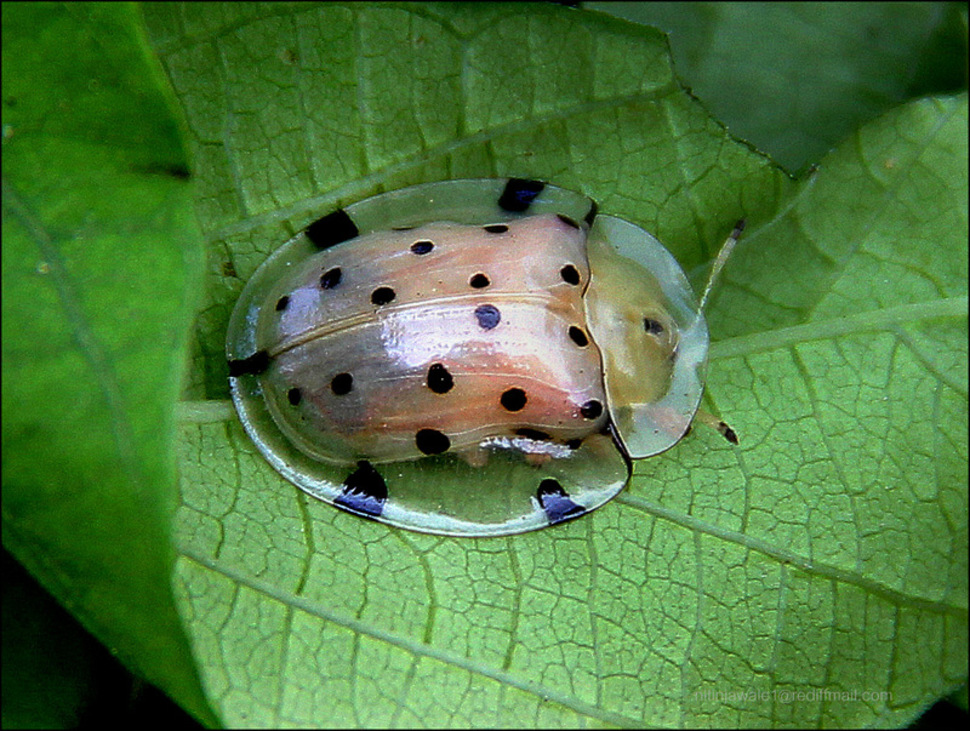
These beetles are quite colourful, but posses an entirely transparent upper shell that surrounds it like a bubble, creating an entirely unique appearance.
#7. Sea Salp
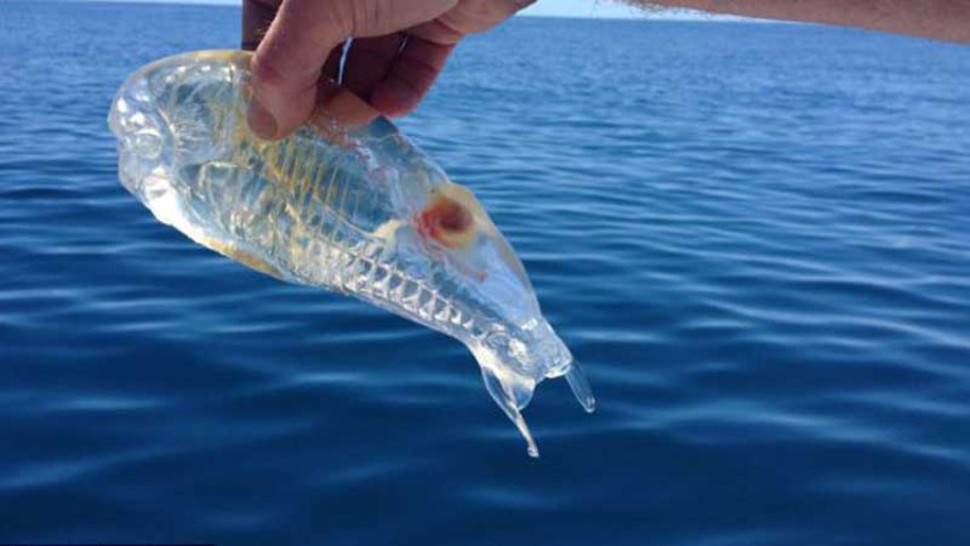
These tiny barrel-shaped organisms move through the water by pumping water through their gelatinous bodies, munching on phytoplankton as they go. Salps are known for their unique life cycle, during which they exist both as individuals (above) and part of a larger organism (below). Four-inch (10.2 centimeter) sea salps link together to make luminous chains up to fifteen feet (4.6 meters) long!
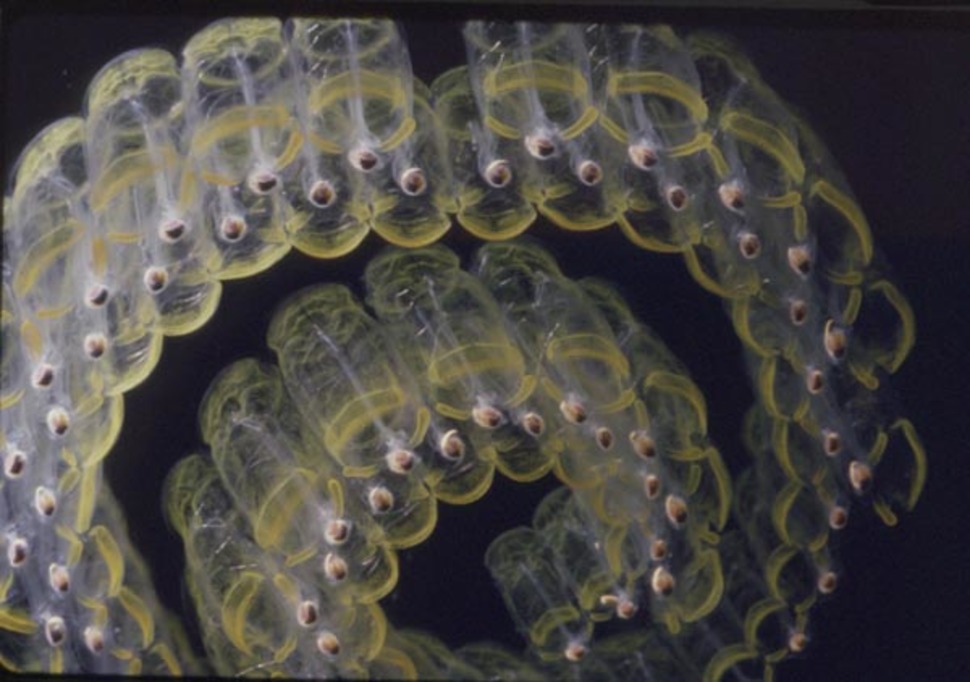
#8. Transparent Sea Cucumber
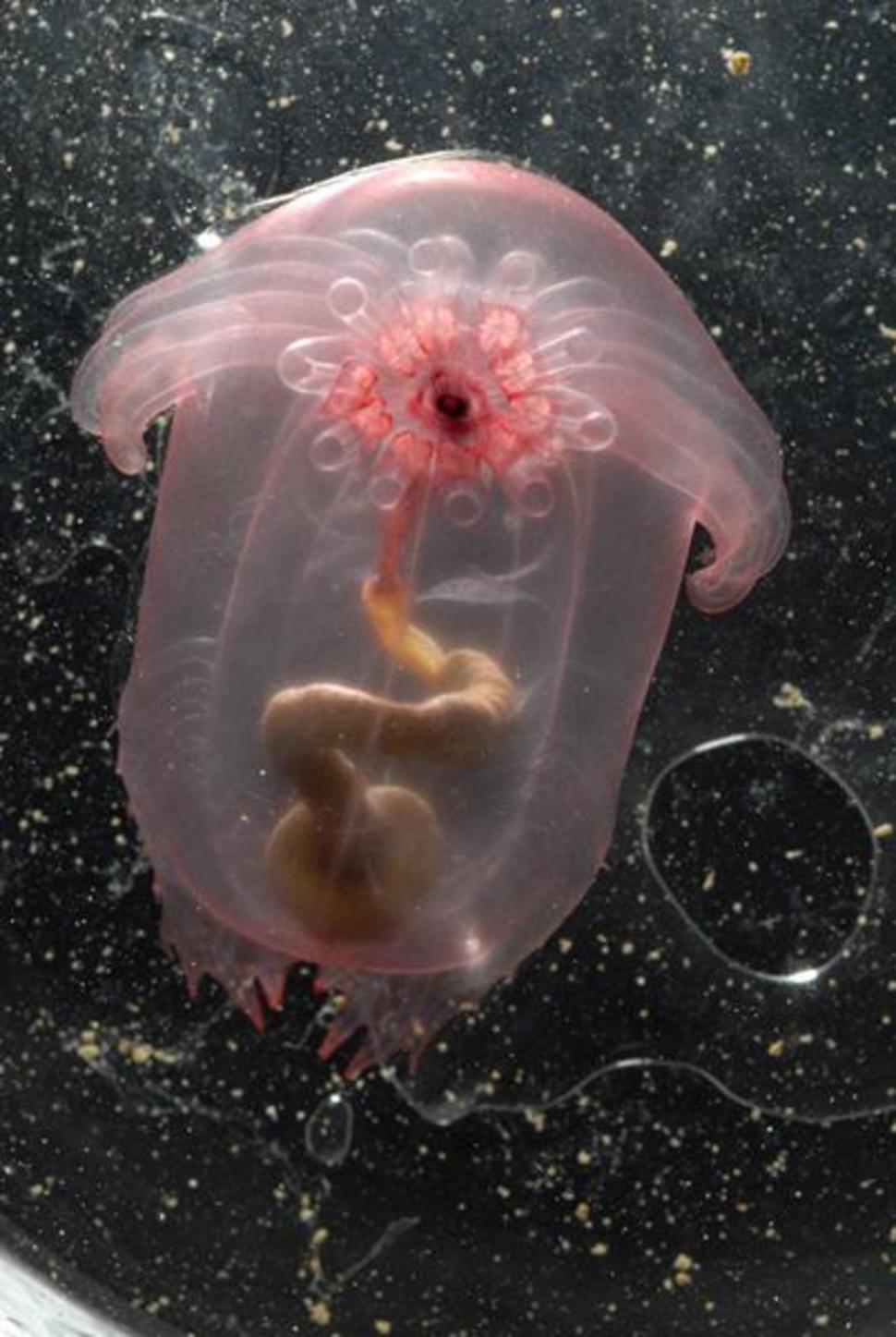
This alien-like sea creature lives at a depth of 2,750 meters, on the ocean floor. It creeps forward on its many tentacles at about 2 centimeters per minute while sweeping detritus-rich sediment into its mouth.
#9. Glass Squid
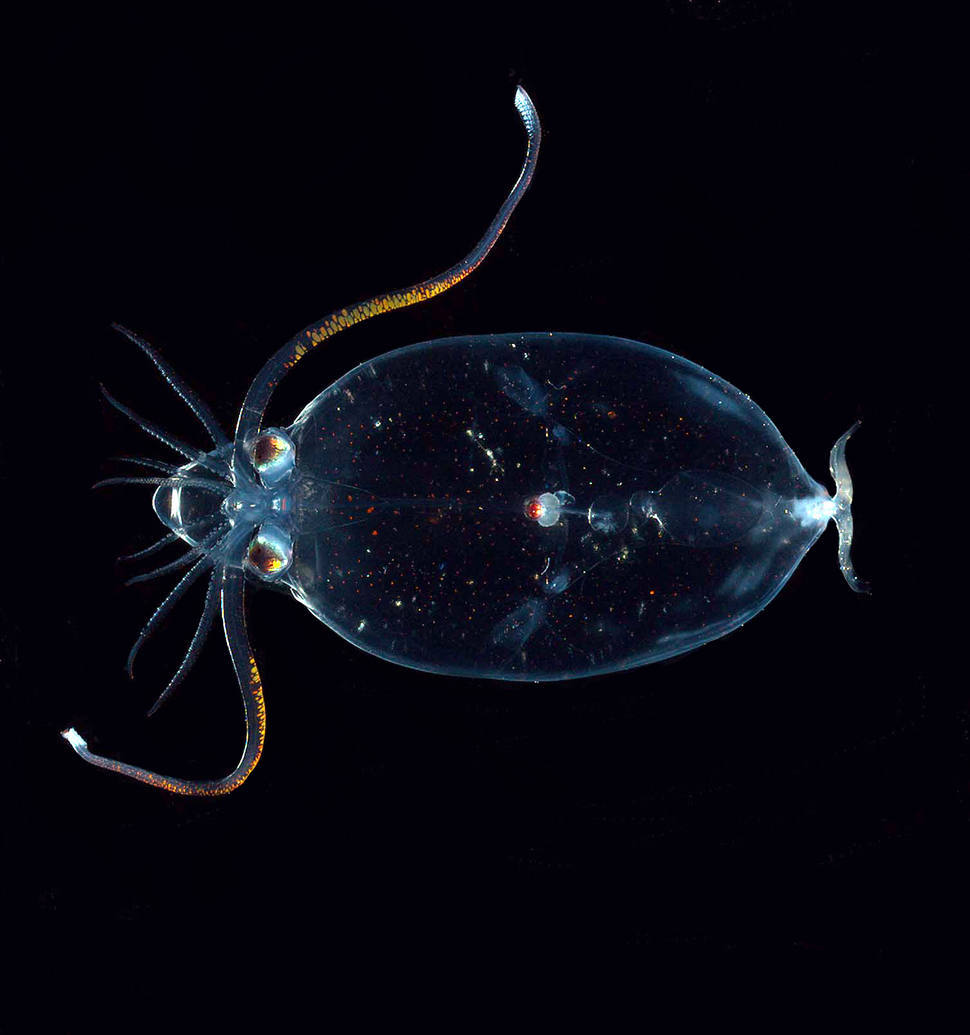
There are about 60 different species of glass squid that make up the Cranchiidae familiy. Many species are bioluminescent and possess light organs on the undersides of their eyes. They typically move vertically to reduce visibility, as their digestive glands can be seen through their transparent skin.
#10. Jellyfish
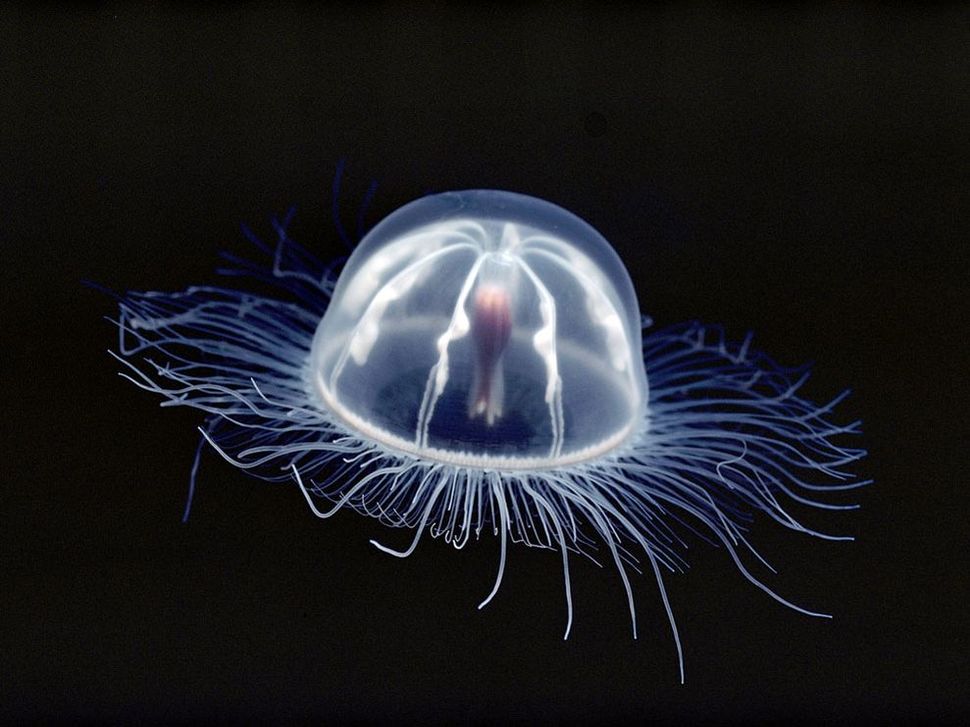
Jellyfish are found in every ocean and have roamed the earth’s waters for at least 500 million years. There are many different kinds of jellyfish that are transparent or translucent. In addition to imparting a beauty and elegance few ocean creatures can rival, their see-through nature makes them dangerous to swimmers who might not see their stinging tentacles coming (pictured: Antarctic transparent jellyfish).
#11. Big Skate
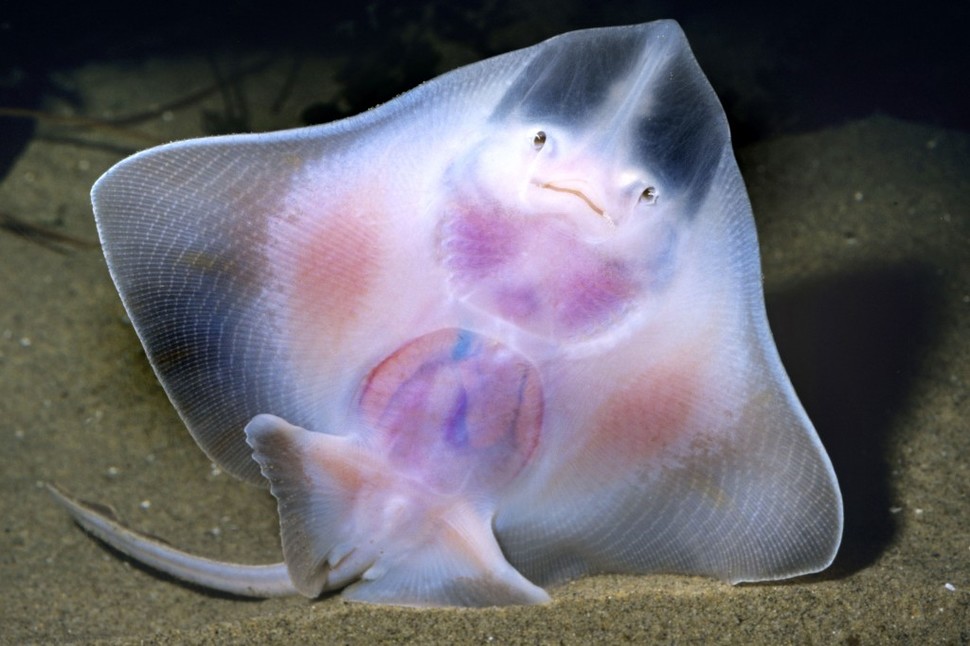
Raja Binoculata or ‘big skate’ is often found in shallow waters. Its human-like ‘face’ makes it a popular attraction in aquariums all over the world. Their very pale skin reveals internal organs — if you can get close enough that is!
#12. Phronima
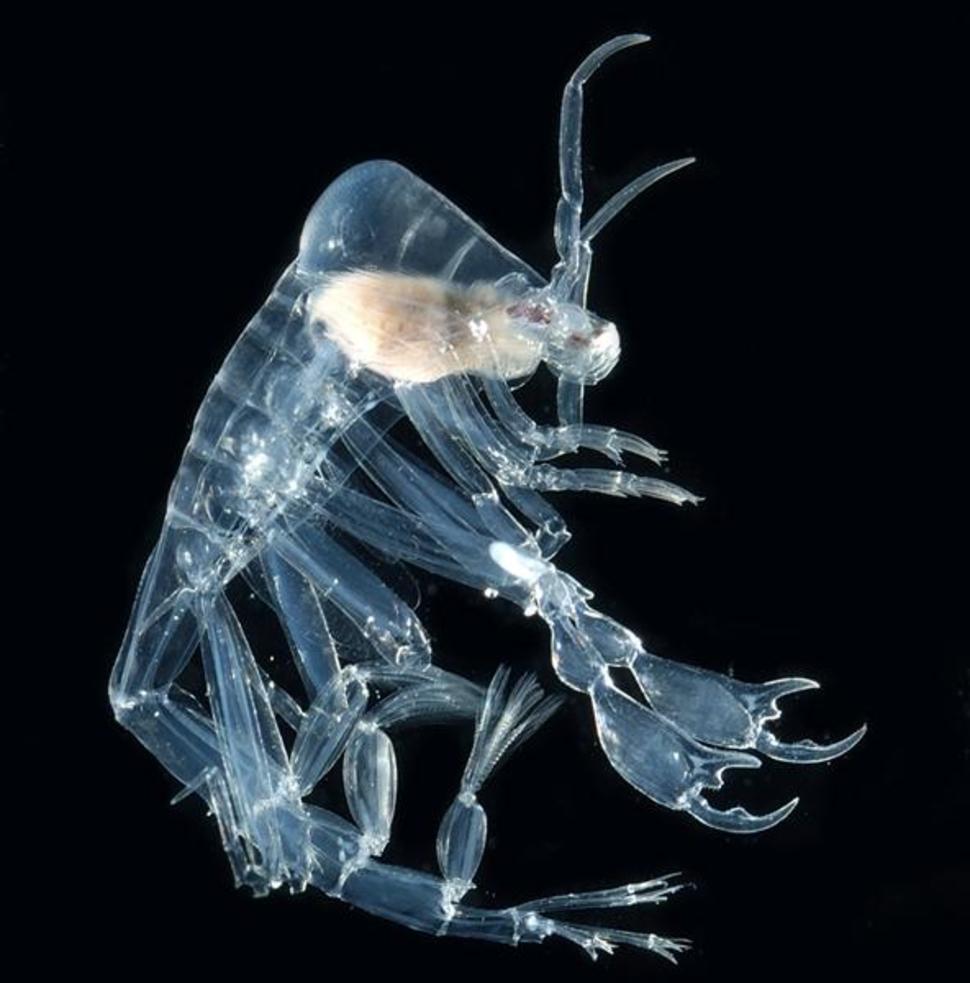
This deep-sea shrimp-like creature may be tiny (most never exceed 1 inch in length) but it makes up for it in extreme ferocity. Phronima females attack salps, eating them from the inside, and then lay their eggs inside the dead bodies. You wouldn’t want to mess with these little critters.
#13. Cyanogaster
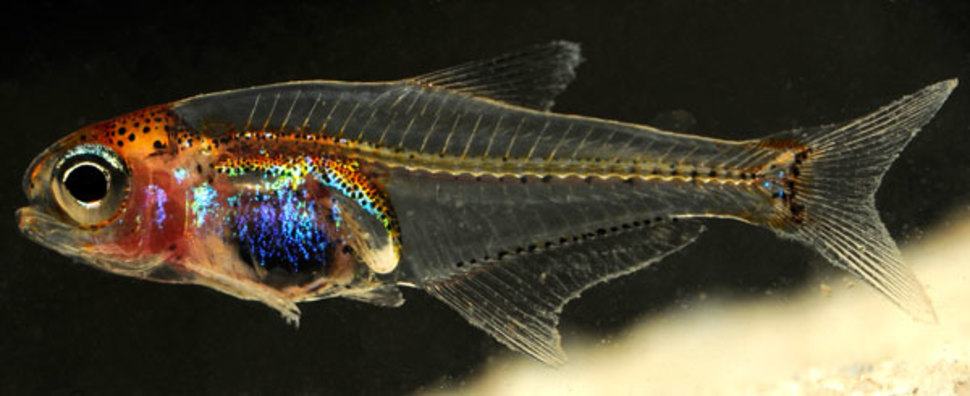
Discovered only a few years ago, this blue-bellied fish is only a few millimeters long. It lives in Rio Negro, the largest tributary of the Amazon River and seems to appear only at night.
#14. Sea Angel
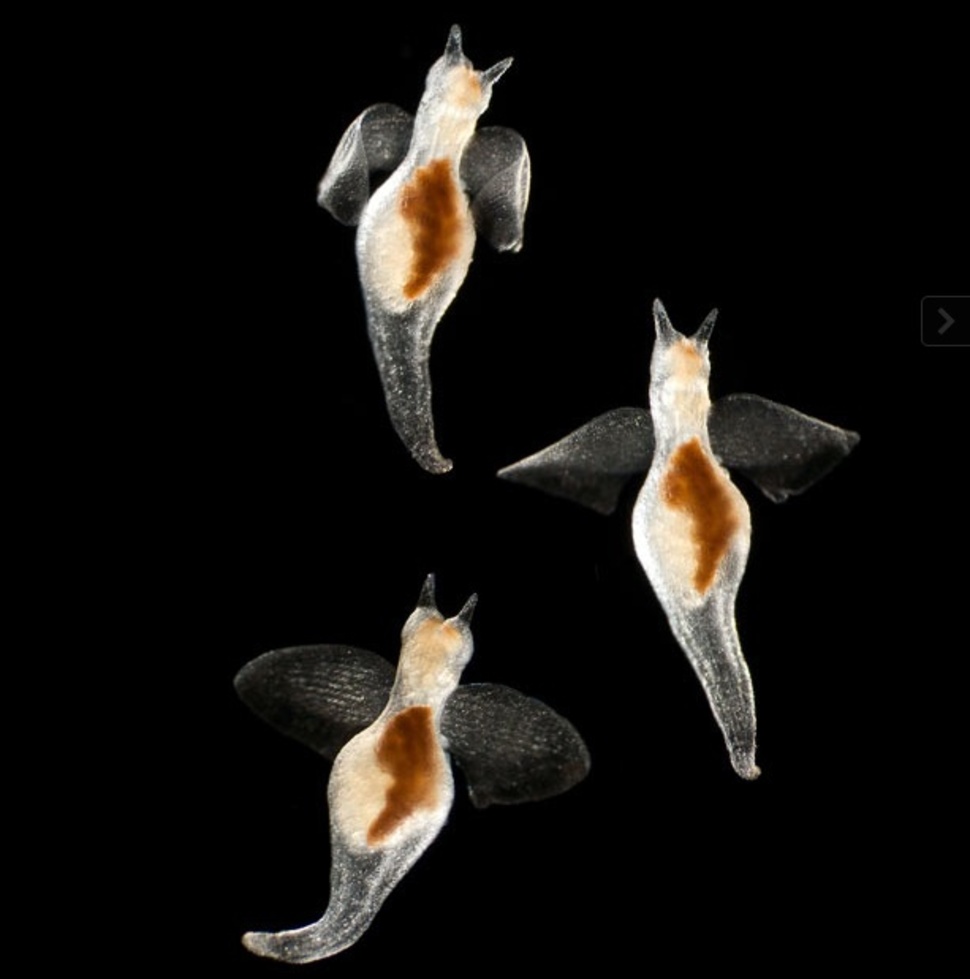
These ethereal, otherworldly, translucent sea slugs hover through the cold waters of the Arctic Ocean. If they look familiar it might be because they are the real-world inspiration behind the Pokemon characters Phione and Manaphy.
#15. Barton Springs Salamander
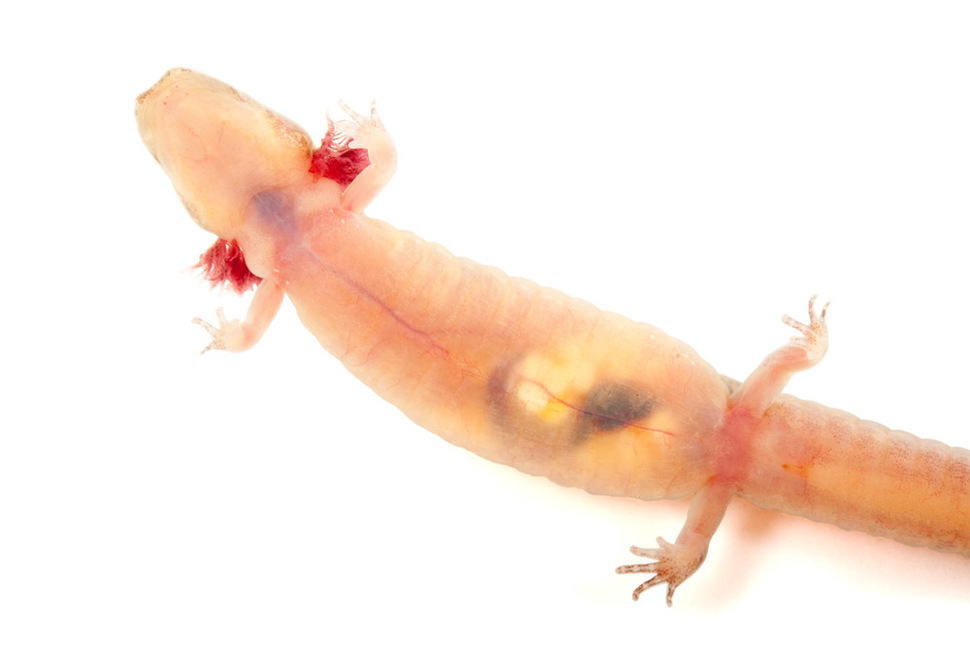
This endangered lungless salamander is not much of a traveller. It makes its only home in Barton Springs, a group of natural springs in Austin, Texas.
#16. Costa Rican Tadpoles
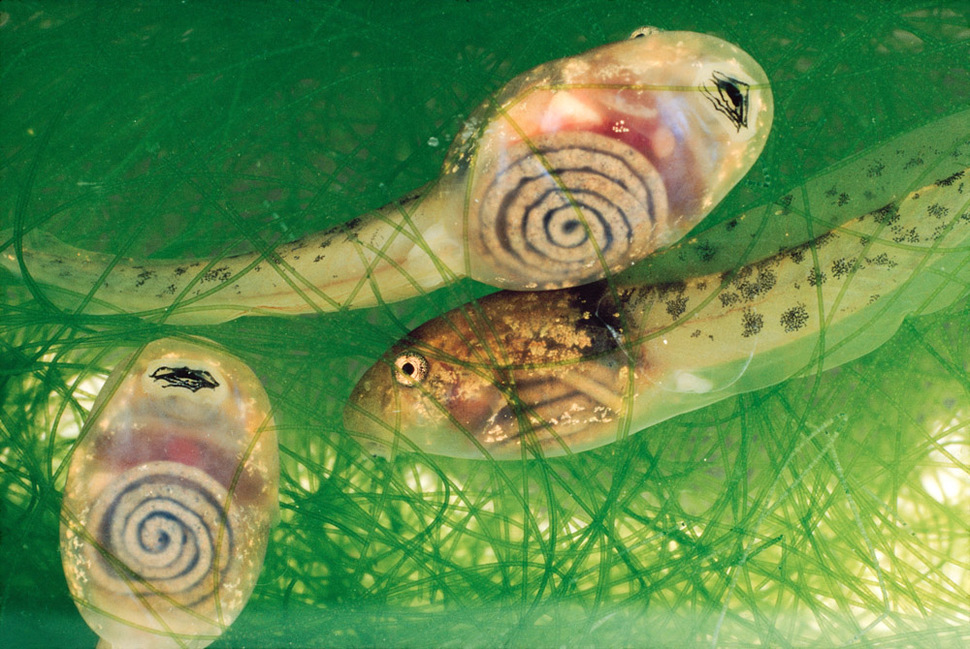
These tadpoles’ see-through skin allow us to see their neatly coiled intestines. Pain au raisin anyone?
#17. Glass Catfish
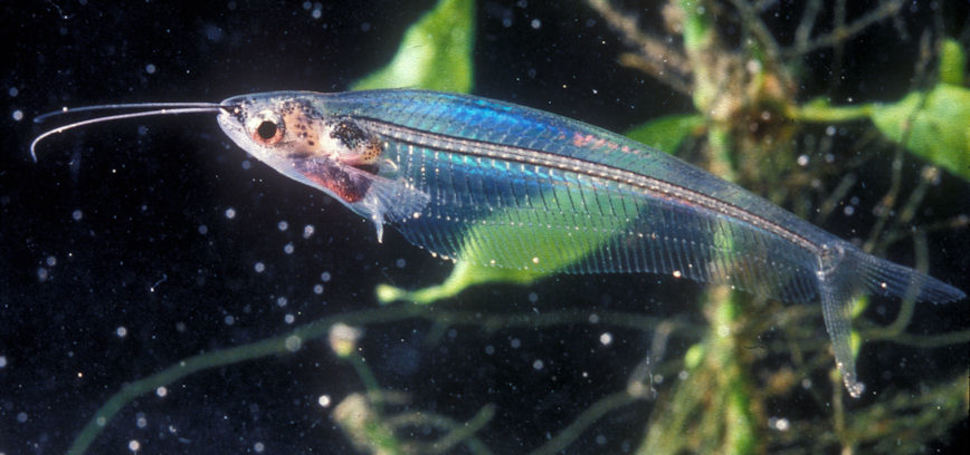
The Asian glass catfish is one of the most transparent vertebrates on the planet. Most of their organs are located near the head and with a magnifying glass their heart can be seen beating. When the light strikes the fish just right, it can create an iridescent rainbow color. They live in slow-moving streams throughout Thailand, Malaysia and Indonesia. After death, they turn a morbid milky white colour.
#18. Clear Slug
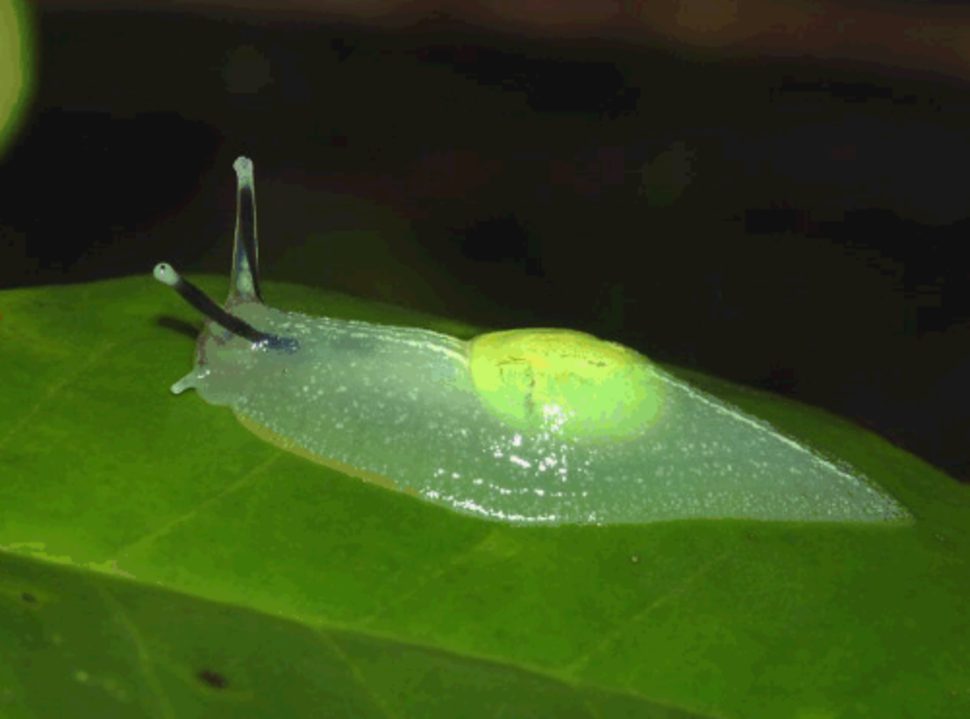
Gaeotis flavolineata is a gastropod whose bright green shell has evolved to become too small for it to retract into fully — making it something in between a land snail and a slug.
#19. Transparent Jumping Spider
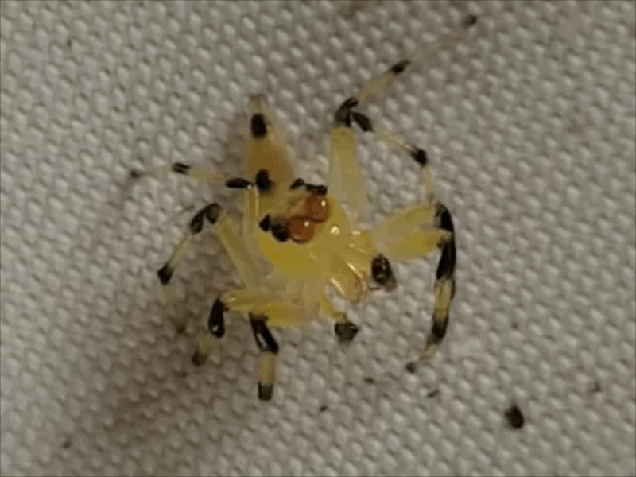
The jumping spider family contains more than 5,000 species making it the largest family of spiders in the world. Worryingly, they have some of the best vision among arthropods and move with lightening speed. This one, spotted in Ecuador, is particularly scary in light of its transparent head and piercing eyes.
#20. Warty Comb Jelly or Sea Walnut
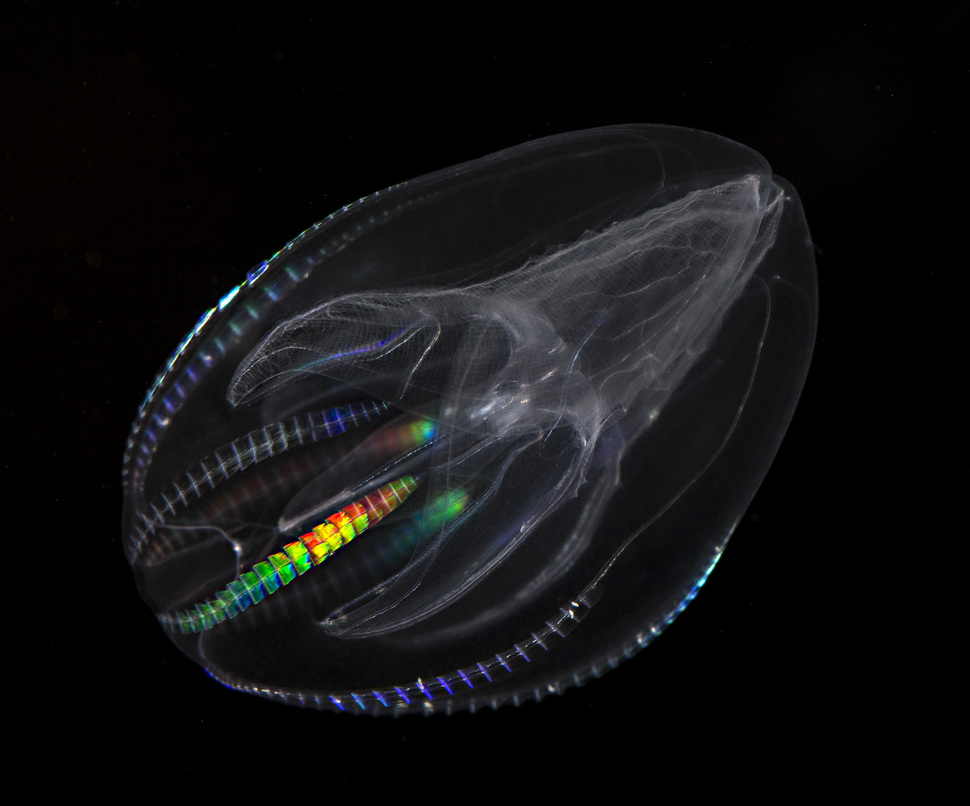
Comb jellys (Mnemiopsis leidyi) have a lobed body, one or two cells thick, that is oval-shaped and transparent. These combs give off a crazy rainbow-colored glow when the jelly is disturbed.
#21. Glass Octopus
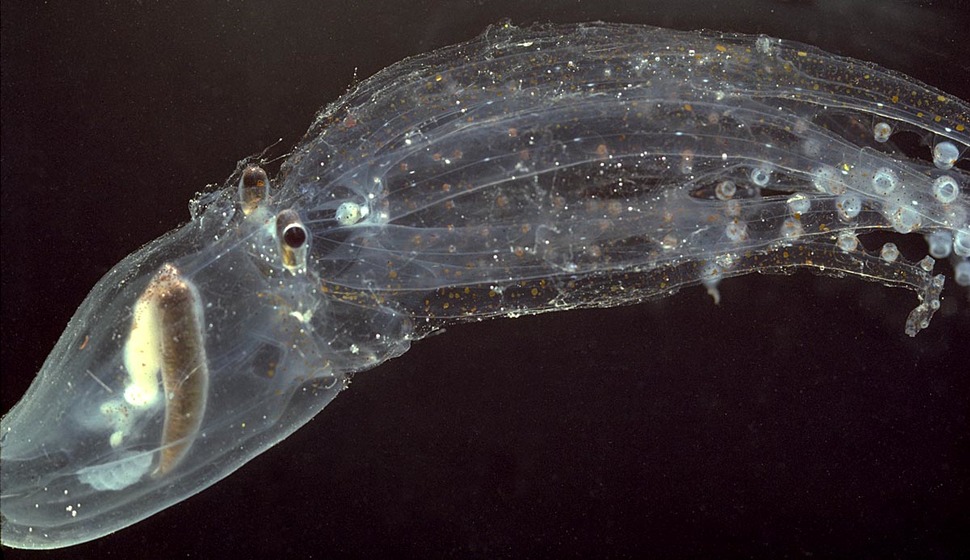
This ghostly octopus is found in the deep open tropical and subtropical waters around the world. Because they are so rarely captured — physically or on film — very little is known about them. Unlike their opaque cousins, these octopuses have elongated eyes that seem to be pointed perpetually upward, presumably to maximise the dim light from above.

